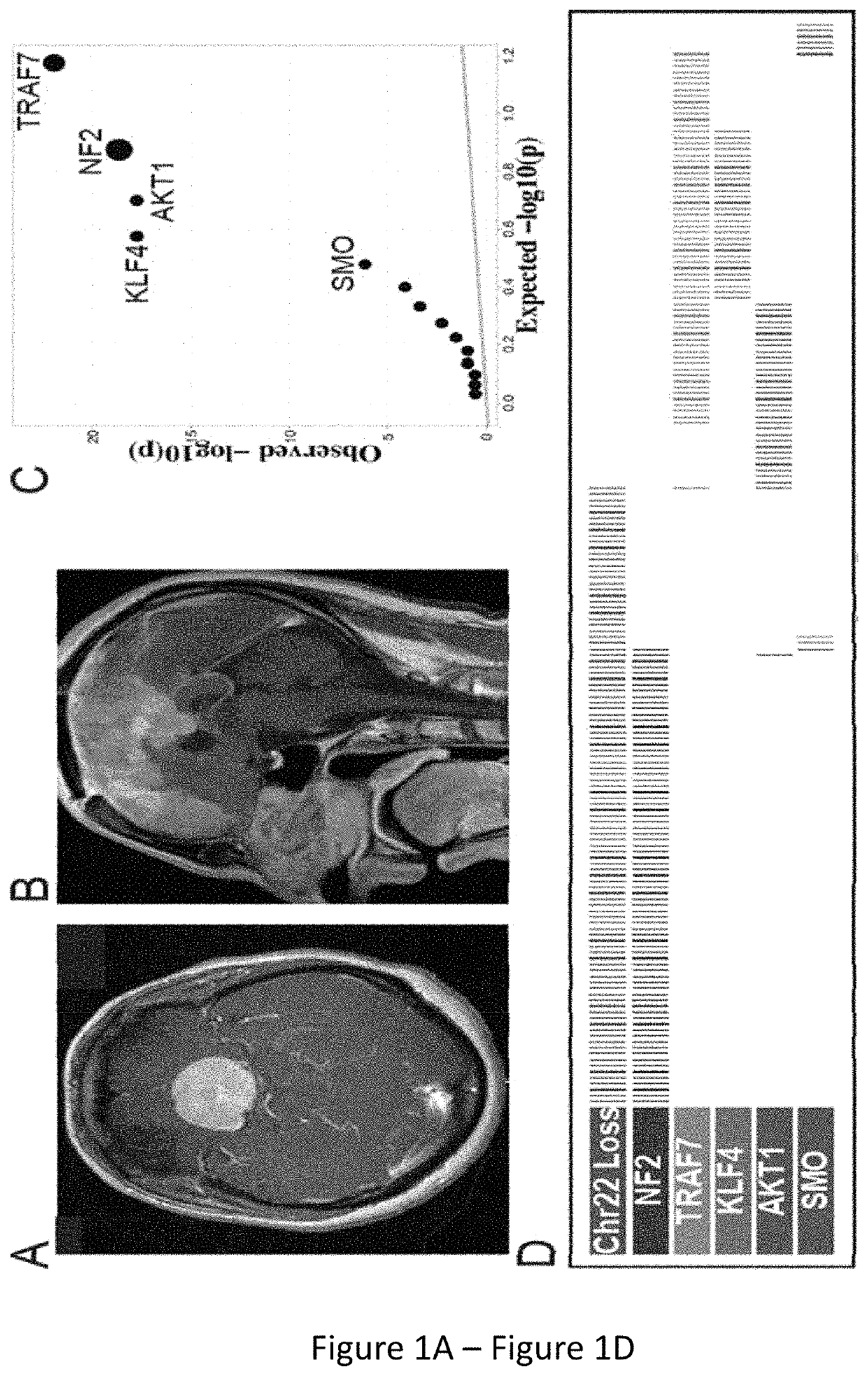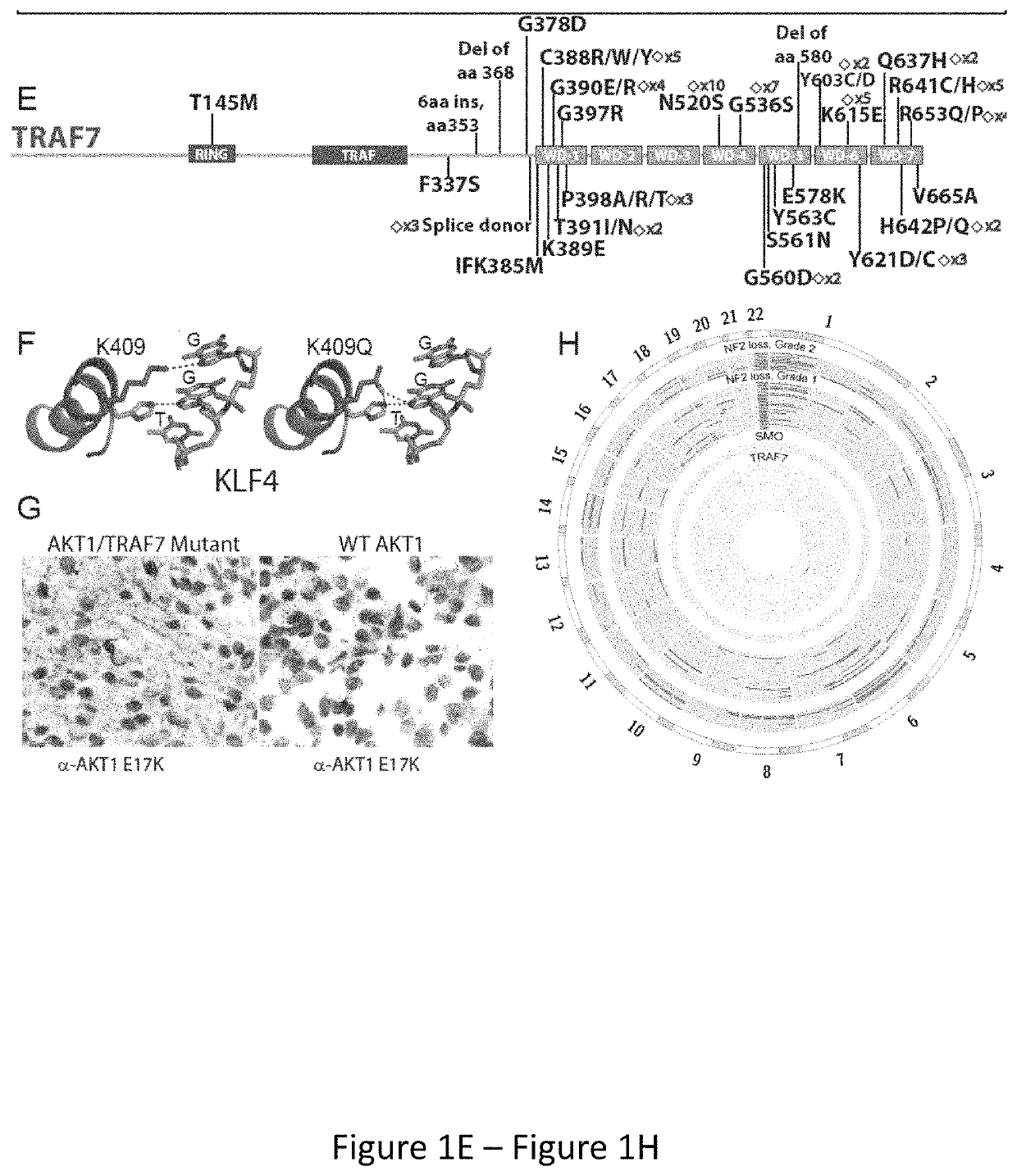Compositions and methods for diagnosing and treating meningioma
a technology for meningioma and compositions, applied in the field of compositions and methods for diagnosing and treating meningioma, can solve the problems of increased symptom severity and greater risk of recurrence, neurodeficiency, and inability to accurately predict the occurrence of a complication,
- Summary
- Abstract
- Description
- Claims
- Application Information
AI Technical Summary
Benefits of technology
Problems solved by technology
Method used
Image
Examples
experimental examples
[0221]The invention is further described in detail by reference to the following experimental examples. These examples are provided for purposes of illustration only, and are not intended to be limiting unless otherwise specified. Thus, the invention should in no way be construed as being limited to the following examples, but rather, should be construed to encompass any and all variations which become evident as a result of the teaching provided herein.
[0222]Without further description, it is believed that one of ordinary skill in the art can, using the preceding description and the following illustrative examples, make and utilize the compounds of the present invention and practice the claimed methods. The following working examples therefore, specifically point out the preferred embodiments of the present invention, and are not to be construed as limiting in any way the remainder of the disclosure.
example 1
Neoplasia Genes. TRAF7 and KLF4, Along with SMO and AKT1, Define Clinically Distinct Meningiomas
[0223]Meningiomas are the most common primary brain tumors. While typically of benign histology, they can be associated with significant neurological morbidity and have the potential for malignant transformation. Reported herein is a genomic analysis of 300 meningiomas using whole-exome and targeted next-generation sequencing leading to the identification of driver mutations in two genes, TRAF7 and KLF4, not previously known to play a role in neoplasia. Three known-neoplasia genes, NF2, AKT1 or SMO, were also found to contribute to meningioma formation. Non-NF2 tumors were typically benign, showed chromosomal stability and localized to the medial skull base. In contrast, NF2 mutant meningiomas showed genomic instability, increased risk for malignancy and localized to the cerebral and cerebellar hemispheres. Gene expression and ChIP-seq analyses showed subgroup-specific differential gene e...
PUM
| Property | Measurement | Unit |
|---|---|---|
| wavelength | aaaaa | aaaaa |
| Tm | aaaaa | aaaaa |
| Tm | aaaaa | aaaaa |
Abstract
Description
Claims
Application Information
 Login to View More
Login to View More - R&D
- Intellectual Property
- Life Sciences
- Materials
- Tech Scout
- Unparalleled Data Quality
- Higher Quality Content
- 60% Fewer Hallucinations
Browse by: Latest US Patents, China's latest patents, Technical Efficacy Thesaurus, Application Domain, Technology Topic, Popular Technical Reports.
© 2025 PatSnap. All rights reserved.Legal|Privacy policy|Modern Slavery Act Transparency Statement|Sitemap|About US| Contact US: help@patsnap.com



